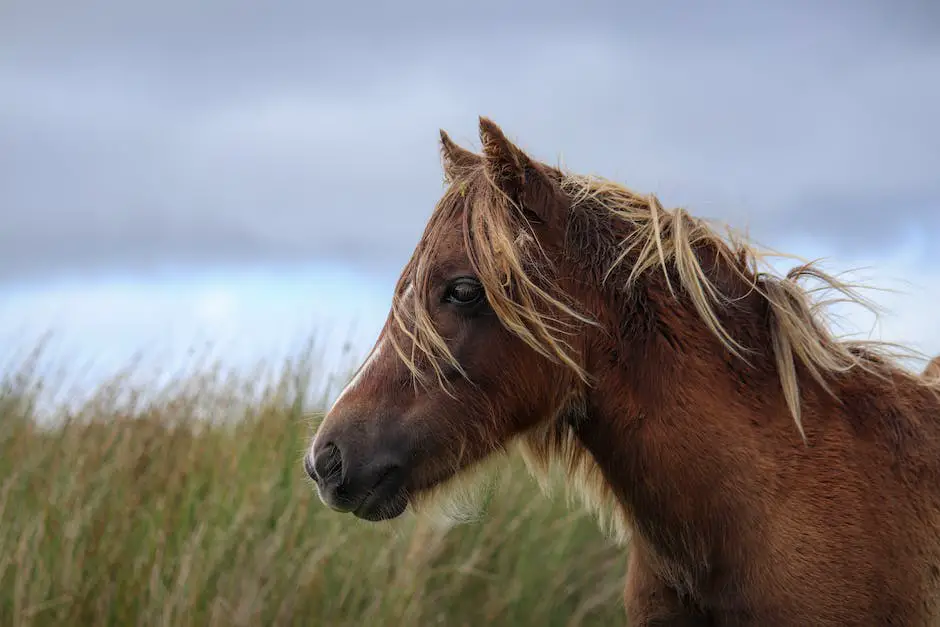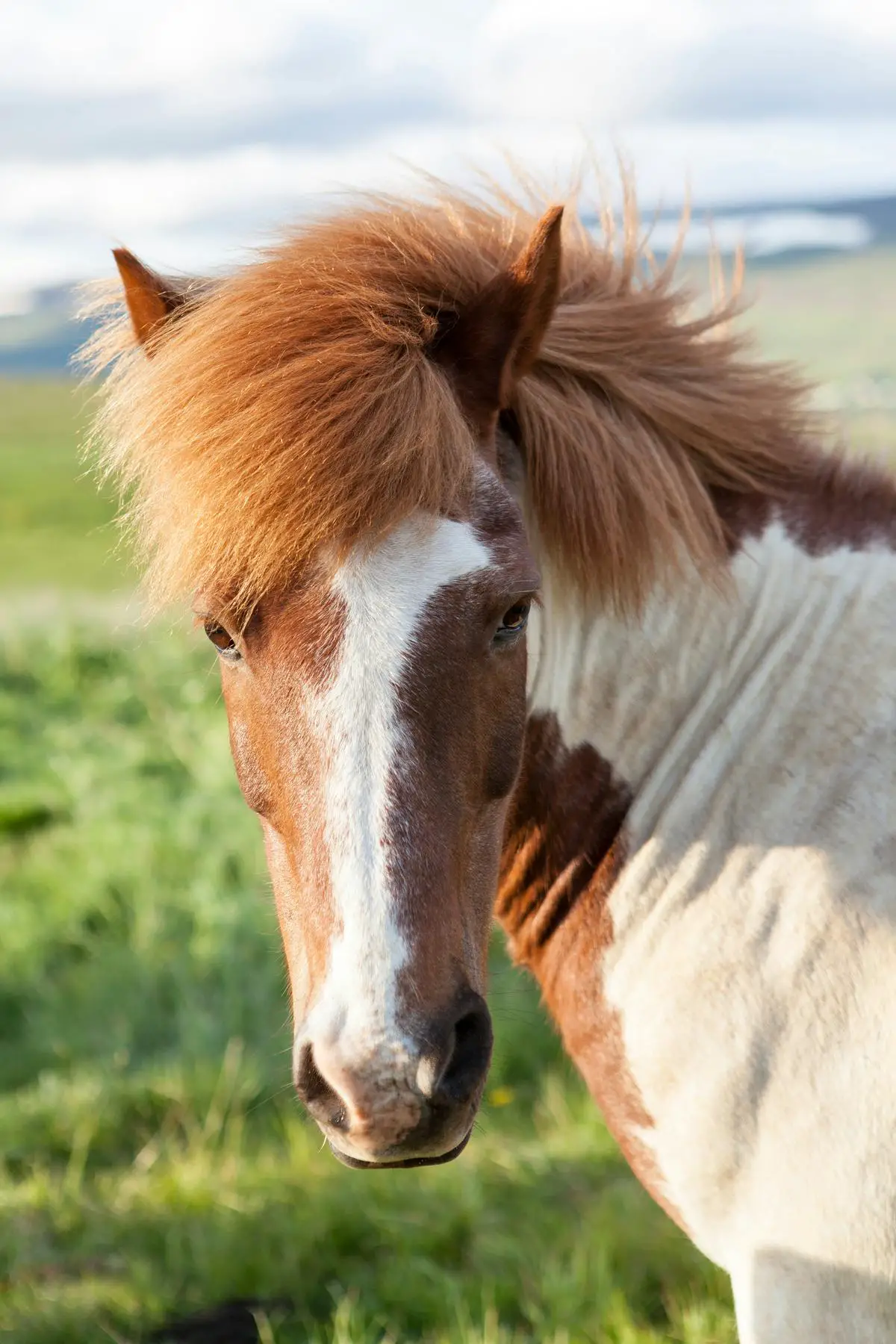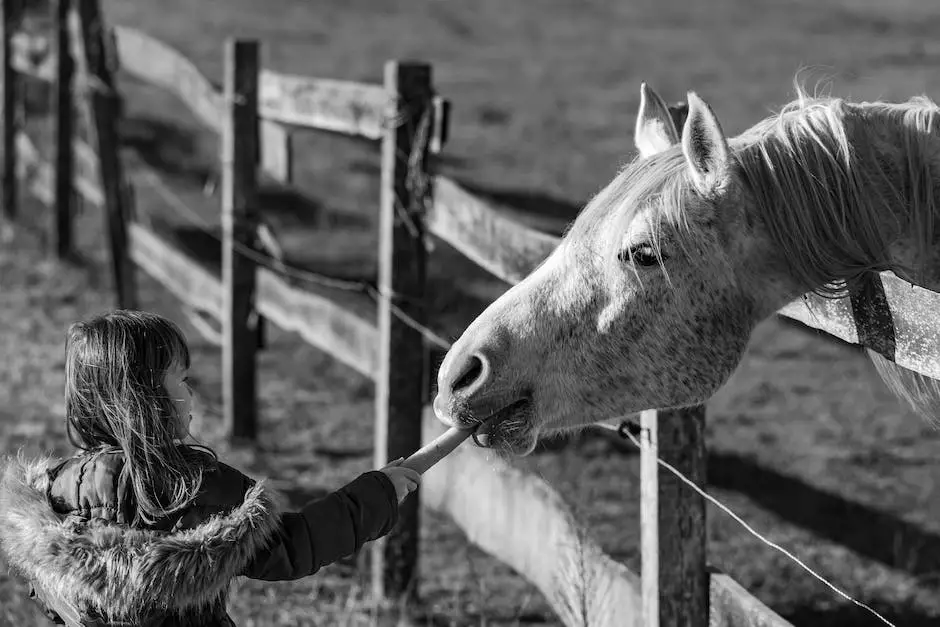With their diverse anatomical and physiological differences, cold-blooded horses present unique challenges and requirements in their care and protection, especially when it comes to withstanding lower temperatures. This necessitates a closer look into the specifics of horse blankets specifically designed for these magnificent creatures. Understanding the intricacies of their biology, knowing how to choose the right horse blankets, and being skilled in the proper use and care of these blankets is critical for enthusiasts or hobbyists aiming to provide the best possible care to their cold-blooded horses. They allow these animals to remain comfortable and healthy regardless of the weather, ensuring that their unique needs are effectively met.
Table of Contents (Horspedia)
Understanding Cold Blooded Horses
The Unique Nature of Cold-Blooded Horses: Unfolding the Need for Special Blankets
Cold-blooded horses stand in a class all their own, especially when it comes to their breed characteristics and traits. These horses, also known as draft horses, are muscular, big-sized, and incredibly strong. They are renowned for their gentle, serene, and of course, their ‘cold-blooded’ temperament, which is a stark contrast to hot-blooded or warm-blooded horses. However, one might ponder, “If they’re cold-blooded, why do they need special blankets?” Read on to discover the fascinating whys and wherefores!
Unlike the reptiles we often picture when we hear “cold-blooded,” cold-blooded horses aren’t dependent on external sources to maintain their body temperature. This term simply means that these equines are known for their calm, unflappable demeanor, quite unlike the highly strung, energy-packed attitudes of their hot-blooded counterparts. To keep them comfortable, healthy, and stress-free amid fluctuating environmental conditions, special blankets serve a singularly crucial purpose.
First, as massive vs. smaller horses, cold-blooded types boast a greater surface area compared to their body mass. Thus, they can lose body heat more rapidly than smaller breeds, particularly during frigid months. Special blankets, especially ones with optimal insulating materials like polyfill or fiberfill, aid in retaining the body heat, keeping them snug and warm even in freezing temperatures.
Secondly, draft horses generally burn fewer calories to keep themselves warm, thanks to their slower metabolism relative to their smaller counterparts. However, during colder months, staying warm demands more energy output from them. Blankets provide that extra layer of insulation, reducing the energy need to maintain their core temperature, thereby ensuring calorie conservation for other critical bodily functions.
Thirdly, it’s a known fact that cold-blooded horses often sport less natural coat compared to many horse breeds. Although they do indeed fluff up as temperatures drop, a good quality blanket aids in shielding them further against biting winds and snow- something their native coats might not be adequate for.
Moreover, a well-fitted horse blanket helps prevent potential health concerns such as hypothermia, frostbite, or chills, which can occur due to prolonged exposure to severe cold. It’s also worth mentioning that special design features like neck covers and larger sizes in blankets can cater specifically to the needs of these large breeds.
To sum it up, it’s about balancing comfort and maintaining health. While their name might suggest they prefer the cold, remember that your cold-blooded horses have unique needs. So when the mercury drops, a thoughtfully selected and well-fitted blanket could make all the difference in your gentle giant’s comfort, health, and life quality. Your equine friend deserves no less!

Choosing the Right Horse Blankets
Tips for Choosing the Perfect Blanket for Your Cold-Blooded Horse
As passionate horse caretakers, we know that when winter’s icy claws grasp the farm, our cold-blooded friends require special attention. Part of that care involves choosing the perfect blanket, a critical layer of defense against frigid drafts, snow, and icy rain. So let’s dive right into tips for choosing the best blanket for these unique horses.
Each horse is unique, and their precise build, age, and general health status can all influence the type of blanket that’s best suited for them. Keep a keen eye on these factors when making a choice. As caretakers, we must acknowledge the individual needs of each horse and adjust our choices accordingly.
Let’s consider the weight of the blanket first. There are three standard weights: light, medium, and heavy. Light blankets are best suited to climates that get chilly but not extremely cold. Medium blankets provide adequate warmth in freezing temperatures, while the heavyweight blankets are designed for extremely low temperatures or cases where your horse has no natural coat.
An essential tip to remember is that more weight doesn’t necessarily mean better warmth for your horse. Instead, it’s about finding the right balance based on where you live and your horse’s individual needs. Ensuring that the blanket is breathable is crucial, so the horse does not get too hot and sweat, leading to other health issues.
Blanket size is also critical. Remember the old adage, “Measure twice, cut once?” There’s a lot of wisdom there. Measure your horse from the center of their chest, along their side, ending at the tail. Most blanket manufacturers offer a size chart based on these measurements. A poorly fitted blanket can cause discomfort, restricted movement, and potentially even skin sores, so precision is of utmost importance.
When it comes to material, durability is paramount. Cold-blooded horses, like their warm-blooded counterparts, can be rough on their gear. Look for blankets made of strong, rip-stop material that can withstand their antics. Additionally, a water-resistant material is a must if you live in a rainy or snowy climate.
Lastly, don’t forget to consider the fastening system of the blanket. The goal is to keep the blanket secure on your horse, without causing any discomfort. Look for adjustable straps and secure, but easy to operate, clips that will keep the blanket snugly in place.
Picking the right blanket for your cold-blooded horse can seem a daunting task with the plethora of choices in the market. However, keeping their unique needs and your local weather in mind, you can navigate this task flawlessly. Because in the end, ensuring our cold-blooded companions are warm and contented during the winter months not only gives them comfort but gives us peace of mind as well.

Proper Usage and Care for Horse Blankets
Looking further into equipping our regal cold-blooded horses with the comfort of warm blankets, the level of care doesn’t simply end with donning the blanket on their broad, robust backs. The responsibility extends to ensuring the longevity and effectiveness of these protective coverings. Caring for your cold-blooded horse blankets is akin to maintaining armor – it’s vital for the welfare of these gentle giants.
As vital as oxygen for life, is the blanket for a cold-blooded horse. Choosing the right blanket cannot be overstated. Factors such as build, age, and general health status should guide this selection. For example, an older, more frail horse might require a heavier blanket, while a younger, healthier horse might be well suited to a medium-thickness blanket.
Different weights of blankets reflect their suitability for altering climates and conditions. Heavyweight blankets can serve as a reliable coat during extreme cold, whereas lightweight blankets are more adaptable to climates with fluctuating temperatures.
There’s no denying the importance of breathability in horse blankets. It ensures stagnation doesn’t lead to overheating, and prevents the horse from sweating excessively. Similarly, the integrity of the blanket to resist the forces of weather, specifically water, should be factored in. A water-resistant blanket can provide an extra layer of protection during wet weather conditions.
The best-fitted armor is an armor that stays secure. For horse blankets, this means selecting one with a reliable fastening system. This keeps the blanket secure whilst providing comfort. Remember, discomfort would add to the horse’s distress rather than abating it.
In your quest to find the most suitable blanket, you might find the market overwhelming with its wide range of options. Fear not, equipped with the knowledge of your horse’s needs and nuances, you’ll navigate successfully.
Now that you have chosen the perfect blanket, the next critical step is ensuring it stays effective. Blankets should be cleaned regularly and thoroughly, following the manufacturer’s instructions. The aim is to keep your cold-blooded horse’s protective outer layer as fresh and hygienic as possible.
Repairs should be undertaken immediately if any damages occur. Even minor tears and breaks can welcome in the cold and damp, possibly endangering your horse’s health.
It’s wise to have a spare blanket. This can be immensely helpful, catering to varying weather conditions or serving as a stand-in during the cleaning or repair of the primary blanket.
To encapsulate, dealing with cold-blooded horses extends beyond just offering them a cozy blanket. It nudges you to comprehend the needs and nuances of your horse, choose the right blanket, maintain it wisely, and always be prepared with a backup. Catering to these will ensure your noble steed remains healthy, comfortable, and happy in the face of cold climates.

When all the criteria are meticulously taken into account and the correct blanket is appropriately used and cared for, such an item becomes more than just a covering for your horse – it becomes a tool for promoting their overall well-being and health. Therefore, investing time and effort into gaining the knowledge and skills in the domain of cold-blooded horse blankets isn’t merely an act of indulging one’s hobby, but an act of demonstrating valuable horsemanship. With the right blanket securely in place on your horse even in the face of harsh weather, you are not only providing tangible protection to your horse but also showing an understanding and respect for their unique biological makeup.

